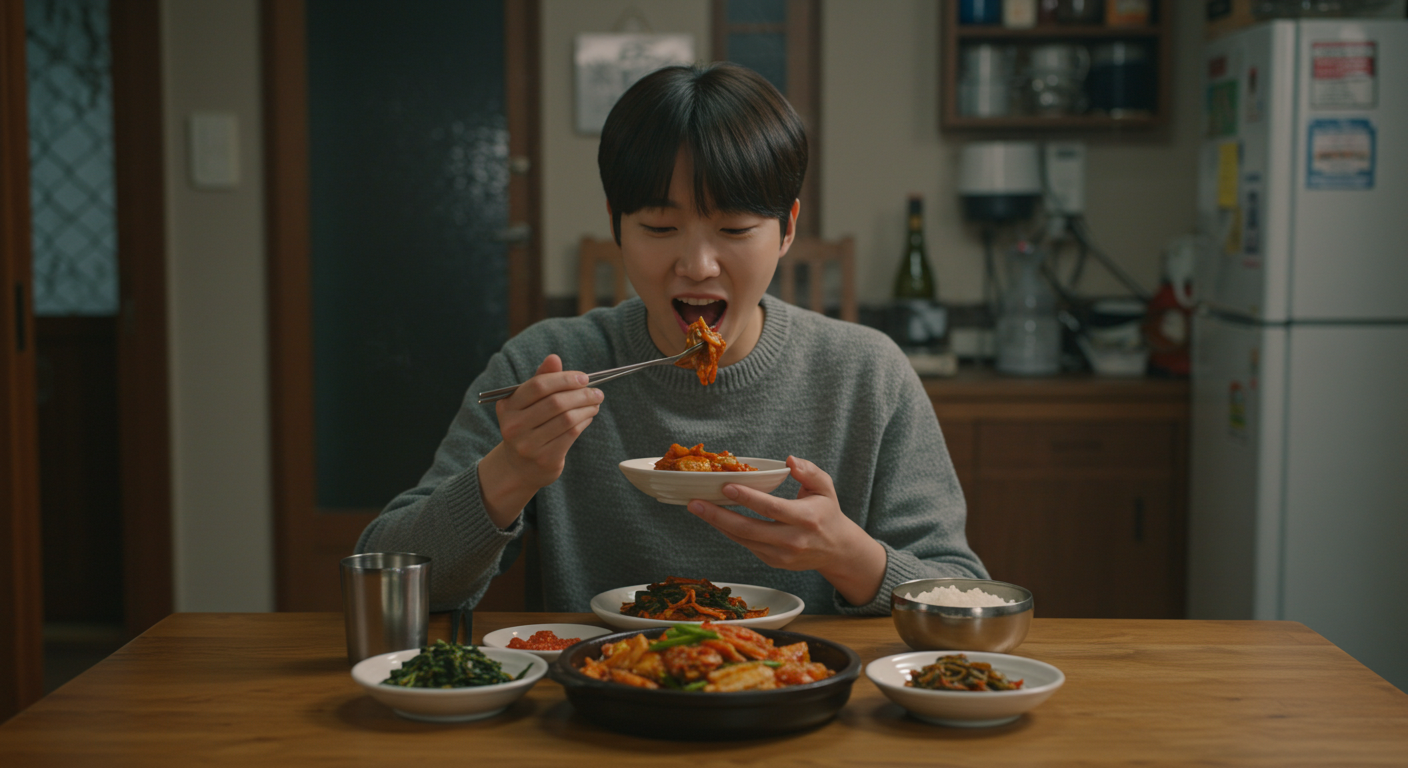Why So Many Meal Scenes in K-Dramas? (Korean food culture)
If you watch Korean dramas, there’s one scene you’ll see again and again: people sitting around a table, sharing food. Sometimes it’s filled with laughter, sometimes with tears—and often with tension. As a foreign viewer, I found myself wondering, “Why are there so many scenes of people eating?” But then I realized that these aren’t just meals. They’re a reflection of Korean food culture, where eating is not just nourishment, but a meaningful way to connect with others.
First Encounter – The Power of a Shared Table
My first Korean drama was Reply 1988. One scene especially stayed with me: the family crowding around a small kitchen table, sharing kimchi. There wasn’t much dialogue, but the way they passed side dishes and served rice spoke volumes. It was then I realized that in drama food scenes, the table isn’t just a prop—it’s a stage for emotion, reconciliation, and unspoken love.
Observing and Adapting – Getting Used to Communal Eating
Living in Korea, I soon found that the way food was portrayed in dramas wasn’t fictional. Eating together was the norm. If someone was eating alone, it felt a bit sad—even impolite. At first, I felt awkward, but slowly I learned to appreciate the warmth of communal eating. The phrase “Let’s eat together” wasn’t just an invitation—it was a quiet way of saying, “You belong here.”
A Moment of Realization – Emotions Served at the Table
In Korean culture, the table is more than a place for food—it’s a space for connection. Think about all those drama food scenes again. Families argue over a meal. A friend silently offers food after a long absence. A mother expresses love through carefully prepared side dishes, while a father offers a drink with unspoken support. These subtle expressions are the core of Korean food culture.
Here, meals are not just survival—they’re communication. They’re a form of emotional exchange. Eating together means something. It’s how people express warmth, familiarity, and respect.
At the center of it all is communal eating—a concept deeply embedded in Korean society. Regardless of age or status, people gather at the same table. In doing so, they become equals. This shared act fosters closeness, trust, and a deeper sense of belonging. It’s not about hierarchy, but unity.
Closing Thoughts – A Life Shared Through Food
What once felt like just another scene in a drama now means much more to me. Sharing a meal is sharing life. Watching Korean dramas today, I can feel the warmth in each rice bowl, the affection in every side dish. Korean food culture is one of the most heartfelt ways Koreans communicate—not through grand speeches, but through the everyday act of eating together.
Respect and hierarchy are also reflected in meals:
My Encounter with Korean Age Culture
